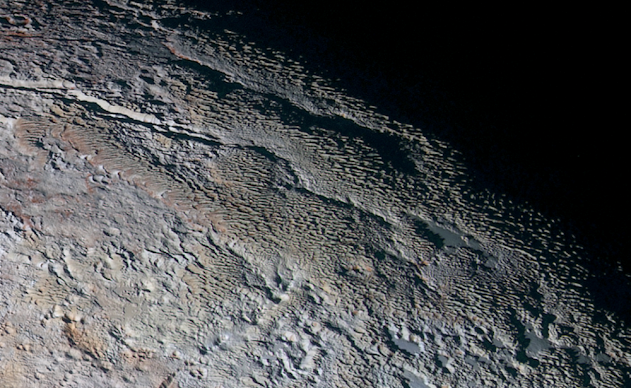Here is a fascinating collection of close-up images of Dwarf Planet Pluto.
Pluto, designated (134340) Pluto, is a dwarf planet in the solar system following Neptune’s orbit. It comes from the Roman mythological god Pluto (Hades, according to Greek mythology). At the General Assembly of the International Astronomical Union held in Prague on August 24, 2006, a new category called plutoid was created, into which Pluto was eventually included.
It is also the prototype of a category of transneptunian objects called plutinos. Pluto has an eccentric orbit highly inclined with respect to the ecliptic, which runs closer in its perihelion to Neptune’s orbit’s interior. It also has five satellites: Charon, Styx, Nix, Kerberos, and Hydra, which are celestial bodies that share the same category as the dwarf planet.
Pluto was discovered on February 18, 1930, by the American astronomer Clyde William Tombaugh (1906-1997) from the Lowell Observatory in Flagstaff, Arizona, and was considered the ninth and smallest planet in the solar system by the International Astronomical Union and by the Public opinion from then until 2006. However, its membership in the group of planets in the solar system was always controversial among astronomers.
After an intense debate, and with the proposal of the Uruguayan astronomer Julio Ángel Fernández and Gonzalo Tancredi before the General Assembly of the International Astronomical Union in Prague, Czech Republic, it was unanimously decided to reclassify Pluto as a dwarf planet. According to the proposal, there are three conditions for an object to be considered a planet: The object must be in orbit around the Sun.
The object must be massive enough that its gravity has rounded it off. More specifically, its own gravity should pull it into a shape defined by hydrostatic equilibrium. The object must have cleared the vicinity of its orbit.
It turns out that Pluto fails to meet the third condition. Its mass is considerably less than the combined mass of the other objects in its orbit: 0.07 times, in contrast to our planet, which is 1.7 million times the remaining mass in its orbit (excluding the moon). Therefore, it was decided by the IAU that bodies like Pluto, who happened to meet criteria number one and two, but not number three, would be called dwarf planets.
For many years there was a belief that Pluto was a Neptune satellite that had ceased to be a satellite due to reaching a second cosmic speed. However, this theory was rejected in the 1970s after dynamic studies determined it was impossible: Pluto and Neptune’s trajectories never come close.
NASA’s New Horizons spacecraft became the first spacecraft to explore Pluto up close, flying by the dwarf planet and its moons on July 14, 2015. Furthermore, in early 2019, New Horizons flew past its second major science target, —2014 MU69, the most distant object ever explored up close.
As revealed by NASA, by the time New Horizons reached Pluto and its moons, it had traveled farther away and for a longer time period (more than nine years) than any previous deep-space spacecraft ever launched.






Thanks for sharing your info. I truly appreciate your efforts
ReplyDeleteI will be waiting for your next write ups thank you once again.
ReplyDeleteThis is a very neatly written article.
ReplyDeleteI will make sure to bookmark it and return to read more of your helpful info.
ReplyDelete